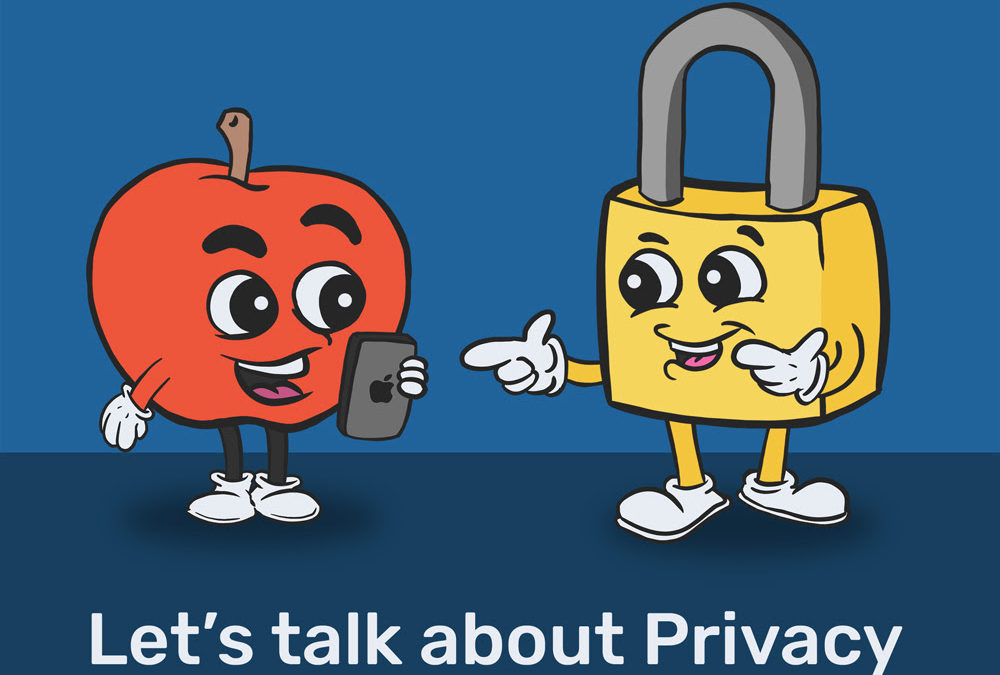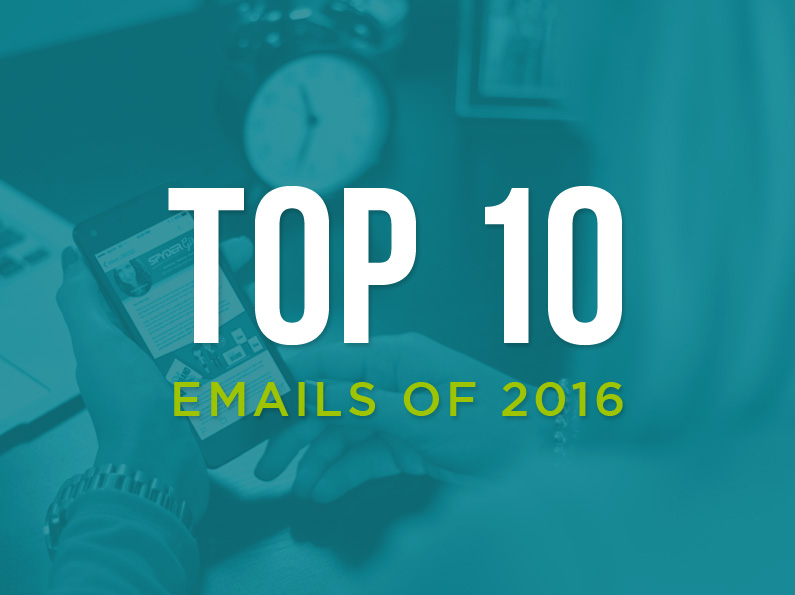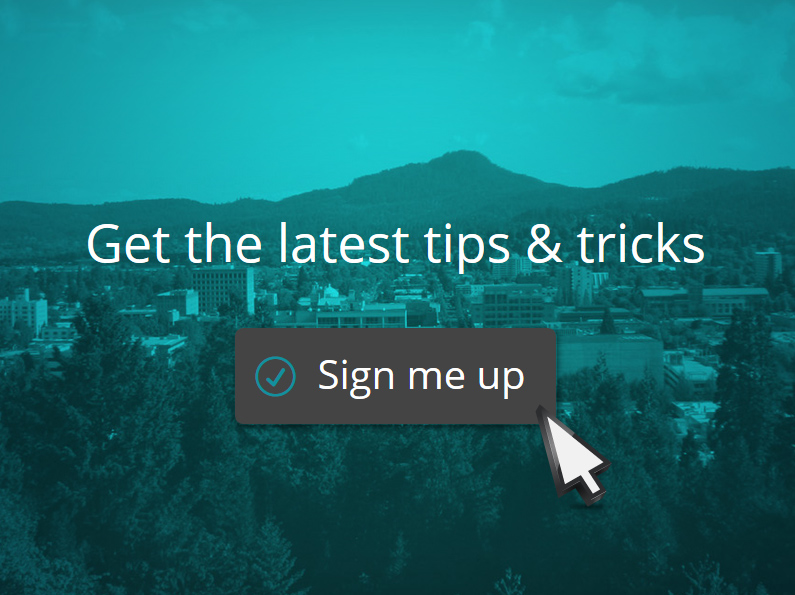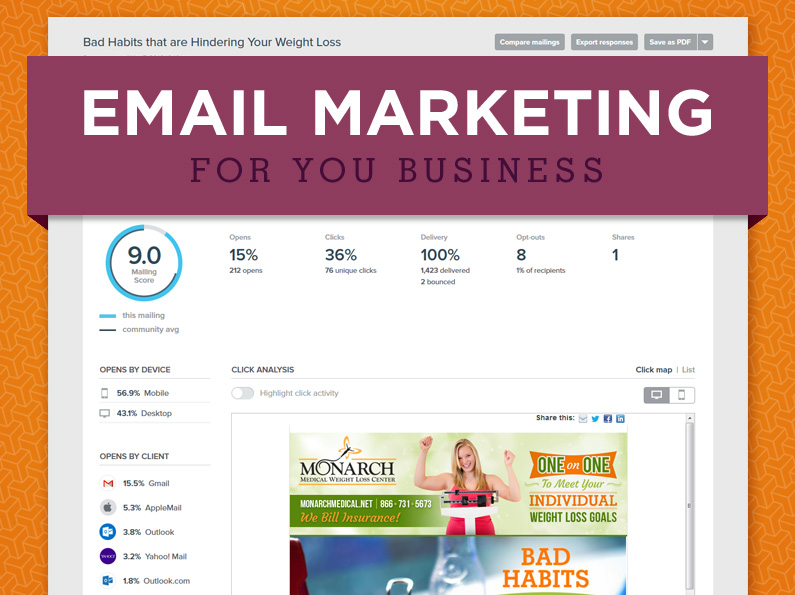
by Mitch Horning | Sep 22, 2021 | Cybersecuirty, Email Marketing
The new software update for Apple mobile devices recently rolled out, and we are paying close attention. The iOS 15 software update places its primary focus on data tracking and email privacy settings within Apple Mail.
The biggest thing we are concerned about is that Apple will now allow Apple Mail users to block the sender’s ability to track who has opened or clicked on something in an email when opened in Apple Mail.
Why Does This Matter?
For many years, we have been able to track who is opening, and who is clicking on emails we send for our clients. This is one way to gauge the most effective day and time to send an email, the most effective subject lines, and overall how well liked and useful an email is. For instance, a recent email we sent for a client was opened by over 50% of her audience but had very few clicks on the link inside. We can identify a problem and help her solve it by giving readers a more compelling reason to click through to read her blog.
Another way we can use this information is to make the most of every email. Knowing whether an email was opened or not enables us to send a follow-up email to people who have not opened it, which results in more opens overall for each message, which allows each effort to garner the most attention possible.
How Many People Will This Affect?
On average, 65% of the emails we send are opened on a desktop, while 35% are opened on a mobile device (this varies by client). Roughly 15% of users are using Apple Mail. For now, we can still get data from those who open emails on a desktop or Android device. Email services such as Outlook, Yahoo!, and Gmail have not rolled out new email privacy protection — yet.
With the recent drop of the new iOS 15, these new protections are not the default settings. Users will need to opt-in in order to hide their data. While not everyone will do so, it’s a fair guess that email campaigns will see a decrease in open & click rates.
It also makes repurposing for those who did not open more difficult…because we won’t be able to tell if those using Apple Mail on a mobile device have opened or not.
What Does This Mean?
While “opens and clicks” play a vital role in measuring email performance, it’s important to remember why email marketing is so great – this does not change because of Apple Mail privacy! There is no other marketing vehicle that allows you to get your message in front of every customer and prospect for pennies on the dollar compared to all other marketing tools. Even if your open and click rates decline, email marketing remains a very effective tool – an effective way to stay top of mind and to cultivate advocates for your business.
Have questions about this? We’re happy to answer.

by Administrator | Apr 2, 2019 | Email Marketing
For every dollar you spend on email marketing, there’s an average return of $32. Not bad, right? But as with all marketing, you can’t just throw anything out there, wish upon a star, and hope it works. The key to getting the most bang for your buck is knowing how to write a newsletter that is effective and speaks to your audience. It’s extremely rare that you will meet someone that doesn’t have an email address, and with the number of promotional emails that are sent out daily, it’s crucial that the newsletters you send out have a purpose.
8 Tips for Writing an Awesome Newsletter

So, how do you make sure your email gets opened, read, and ultimately, sends the reader over to your website?
1. Know Your Audience
Even if your business is one that would ideally benefit anyone, it’s likely that you have an average demographic that you cater to. For example, a fitness center that is located near a university campus likely has members of all ages and walks of life, but the main audience they likely want to target is college students looking for a place to work-out.
The most effective email marketing strategy is one that speaks to your target demographic. These emails generally perform better than an email that’s “designed for everyone,” because you are better able to focus your message.
So, before you begin an email, ask yourself: what kind of person do I want to reach?
2. Define Your Goal

Every newsletter you create should have a clear goal. Some goals may include:
- Directing traffic to your website to share a new service your business is offering
- Sending traffic to your website to get customers to read your latest blog
- Bringing attention, and sending traffic to your website’s online store to sell a product
- Selling a specific promotion or special offer
The key to writing a great newsletter is making sure that you appeal to the reader, and that there’s a clear call-to-action. While we love high open rates, that shouldn’t be the main goal, because opens don’t automatically mean conversions.
Select your goal and allow that goal to shape your newsletter.
3. Organize the Pieces with the User Experience in Mind
Decide which content you want to include and the order in which you want to present it. If the reader opened your email and had to decide in two seconds whether or not they’re going to read the whole newsletter (because this is often the case), how are you going to keep them there?
If one of your most popular products is on sale for 50% off, that’s a pretty clear and appealing message to hit them with right away, but it’s not always that easy. If you’re announcing a new service or showcasing a new blog, think of how that service or blog can really make your reader’s life better and use that to shape your initial message.
4. Keep It Short
We understand that as a business owner, you are very passionate about what you do and want to shout every reason why it’s awesome from the rooftops, but as we touched on earlier, you only have a short window of time to keep your reader’s attention.
If you’re covering multiple topics within your newsletter, condense them into concise, but powerful, paragraphs. Give the reader a taste of that topic, and a clear link or button to a destination where they can learn more. But, be sure to keep a consistent voice throughout the entire newsletter, because you don’t want to confuse your audience.
Throughout your entire newsletter, your tone should match your brand. Not sure what we mean by that? Check this out.
5. Add Personalization & Personality Where You Can
Readers respond well when it feels like they are being communicated to directly. We aren’t suggesting you create a custom email for every contact in your audience (because who has time for that?) However, there are many easy ways to add a personal touch, which include:
Add a name-tag code that automatically enters the reader’s first name at the beginning of the email.
If you have your audience segmented into groups (people that are clients vs. people that are not yet clients for instance), create a couple of versions of the same email, with a slightly different message in each.
Also, the more you can make your business fun and relatable to your audience, the better:
- Use humor when appropriate.
- Add special messages from your staff.
- Offer freebies just for the heck of it.
- Include fun videos or personalized images
For local businesses, insert community references that residents in your city will appreciate. Go Ducks! 😉
There are so many ways to have fun with your newsletters, and each business can find unique ways to appeal to their audience.
6. Proofread
We cannot stress this enough: make sure you have multiple sets of eyes on each newsletter before you press the Send button. There’s no better way to get someone to exit out of your newsletter than major typos and grammatical errors. These common errors erode trust and credibility and make your newsletters look careless.
Take a few extra moments to read through your newsletter, and read it again… and again.
7. Make Sure It Looks Good
You know how much we love good content (hint: we REALLY love it), but we also know that humans are visual creatures, and if your newsletter doesn’t instantly catch someone’s eye, they are probably going to click away rather quickly. All of the awesome content you’ve written for your newsletter needs to be presented in a beautiful way.
Here are a few quick tips from our designers:
- Stick to 1-2 fonts, and select font sizes strategically.
- Incorporate striking images and colors that are true to your brand.
- Make sure images aren’t too big or small – big images take too long to load, and small images will be blurry.
- When looking at the entire email from top to bottom from a distance, ensure it flows nicely and looks like a cohesive flyer or poster.
- Add social icons to all of your newsletters.
8. The SINGLE most important tip is this: Tell your reader why they should open your email in your subject line.
Emails that perform are not tricky. The subject line tells the reader why they should open it and then delivers on that promise. Write subject lines that give away what’s inside. Don’t make the reader guess. They won’t. They’ll just pass. If you’re offering a coupon, say that. If you’re telling about a new service, say in the subject line what the service is. This way those people that open it are already interested in what’s inside.
We honestly could write all day about this subject but for now, we hope these tips not only help you write your next newsletter effectively but also help you to gain more traction with your overall strategy. You can do it!
And if you’re like one of the many busy business owners we work with, and you just don’t want to do it or don’t have the time, keep in mind that we create newsletters every day, and would love to explore ways to boost your business with a bomb-dot-com email strategy (let’s just pretend people still say bomb-dot-com).
For Newsletter Help, Contact Us Today
If you want help from our techy/writing/designing Spyders, contact us today and let’s chat. As our owner, Deanna, says, “There is still NO better marketing for return on investment than email when it’s done right.”

by Administrator | Dec 30, 2016 | Email Marketing
As the new year begins, we wanted to highlight some of our favorite email marketing campaigns from 2016. Check out the emails that made our top 10 list, and what made them so effective. (more…)

by Deanna Rivera | Oct 23, 2015 | Email Marketing
Email marketing has always been a tricky topic. Many clients nay-say it, feeling it doesn’t work or produce desired results; that it’s a “waste of time”. Most of the time, this is for one or more of (more…)

by Deanna Rivera | Apr 17, 2015 | Email Marketing
Email marketing is one of the best ways to nurture and maintain relationships with current and future customers. Most businesses overlook or under-utilize email marketing as a viable marketing tool. But email conversion rates are 40 times that of Facebook and Twitter.
When executed correctly as part of a strong marketing strategy, email marketing can have incredible results. Emails not only increase top of mind awareness and brand potency, but drive sales. Here are some of our favorite email marketing tips to get you started.
Begin and Grow Your List
It does no good to begin a campaign with no emails! But we often hear, “I haven’t been collecting emails.”
You may have more emails at your fingertips than you think. You can use any and all of the following to get started:
• People you email: Most email programs like Gmail and Outlook allow you to export your contacts in to an Excel list that you can trim. Don’t be afraid to include family and friends. Ask them to help you grow by sharing your emails.
• Client databases or files: Hire an intern or student to input email addresses from hard copy paperwork in to an excel list that can be imported in to your email database. Most contact databases like ACT and Salesforce will allow you to export emails, also.
• Organizations you belong to: Many membership organizations allow members to email each other their marketing information.
NOTE: It is very important that with your first email, you give these folks the option to “opt out”. Let them know you are beginning a campaign designed to add value to their lives and that their support is essential. However, if they’d like to opt out, that is available.
Now that you’ve begun, you need to immediately and continually grow your email list. The more “veins” you have feeding your list, the better. Here are a few options:
• Collect addresses at events. The best way to do this is to have a giveaway that requires an email to enter.
• Ask for addresses at retail counters or in waiting rooms. Having an iPad that folks can use to enter is a fun way to do this.
• Collect business cards at networking events and send each contact their first “awesome to meet you” email directly afterwards with an invitation to connect again.
• Have opportunities to sign up throughout your website and especially on high traffic pages. Make it easy (don’t ask a lot of questions.) Consider a pop up on your website; it will be hard to miss and is VERY effective.
• Staying involved in social media is helpful, especially when you link your email marketing to your social media accounts. Promote a signup link and share emails through your Facebook and Twitter accounts. Tell people an email is coming a few days ahead to create sign up urgency.
• Regularly ask current subscribers to share your emails.
• Offer exclusive content or discounts to email subscribers.
First Impressions Matter
When a customer gives you their email, they are telling you that they are interested in learning more about your business. It is important that you encourage this relationship by sending a welcome email. Welcome emails are opened 50% more than other emails, so don’t skip greeting new members of your email list! Subscribers that receive a welcome note show 33% more long-term brand engagement. Keep your customers by showing that you recognize their involvement.
Know Your Audience
Relevant emails drive 18 times more revenue than broadcast emails. When you send out a broadcast email, without any segmentation, the email loses some of its value to your readers. By sending relevant and useful content to a tailored audience, your readers will be more inclined to read because it appeals to their interest.
EXAMPLE: You own a store that sells to both business and residential clients. Don’t send business related content to residential customers. Instead, segment your campaign so that each person on your list ONLY receives information that is RELEVANT.
Using a strategy that includes automated emails will help ensure that your customers receive the information they want to know about consistently (and with the least amount of effort for you). Leads nurtured in this way make 47% larger purchases than non-nurtured leads.
Using personalized emails, i.e. including your client’s first name, also increases an email’s effectiveness. Personalized emails improve click through rates by 14% and conversion rates by 10%.
Attract Attention
Make sure that headlines are well thought out so your readers want to read more. Some email marketing programs even allow you to test subject lines before sending out the whole campaign.
Pay attention to the design of your template and the format of your email. Having an attractive and clear design that supports and promotes your brand is important.
Our brains process images 60,000 times faster than text so use relevant and interesting images to attract interest. If the image pops out to your reader, they are more likely to read the accompanying content.
Consider other options to enhance your email, such as a video or a slideshow. Adding video to email increases click rates by 300%. Your customers may be more inclined to watch a short video than read long paragraphs of body text. Many people are just more visual than others, and in this case, watching a video is simply more appealing.
Incorporating interesting facts or a humorous graphic can also be extremely helpful. People will share content to entertain and bring value to one another. If one of your customers found something you sent out to be particularly entertaining or thought provoking, they may forward it to others.
Recognizing detail is important. Details such as surrounding text with more whitespace can improve comprehension by 20%. Additionally, eye tracking data shows that viewers look to the same part of the screen where images of people are looking. Recognizing these photo placement strategies can help you place call-to-action buttons and other relevant information in the best possible place for engagement.
Timing is Everything
58% of adults check email first thing in the morning, so it’s a good idea to send out your emails early in the day.
In addition to time, the day of the week is also important. Mid-week is usually an effective time, and you want to avoid Mondays and Fridays. Most email marketing programs allow you to schedule your emails and newsletters at the best time to ensure optimal viewing.
Analyze data from previously sent emails, such as how many people received, opened, and clicked through your emails, what time they read it and where they clicked. This will help you better decide how to improve your results and make your emails more successful in the future.
Make It Mobile Friendly
51% of emails are opened on a mobile device, so there is a good chance your email will be passed up if it isn’t fully viewable or looks funny on a phone or tablet. People check their mobile phone up to 150 times a day which means they are checking their email more often than ever before! Make sure your email is formatted correctly for the smallest of screens.
When creating things like a clickable button, it’s helpful to remember that the human fingertip is 46 pixels. Make sure everything is sized accordingly to provide efficiency and minimize frustration for your customer.
The subject line is also important for mobile formatting. IPhones will cut off a subject line over 32 characters, which is important to keep in mind when deciding on an interesting title for your email.
Additionally, make sure your business is following the rules and regulations pertaining to the CAN-SPAM Act.
Do you want to begin email marketing, but feel overwhelmed on how to begin? UplinkSpyder provides email marketing strategy, support, and full campaign management. Let us help you use our experience to create and administer an amazing campaign for your organization.






